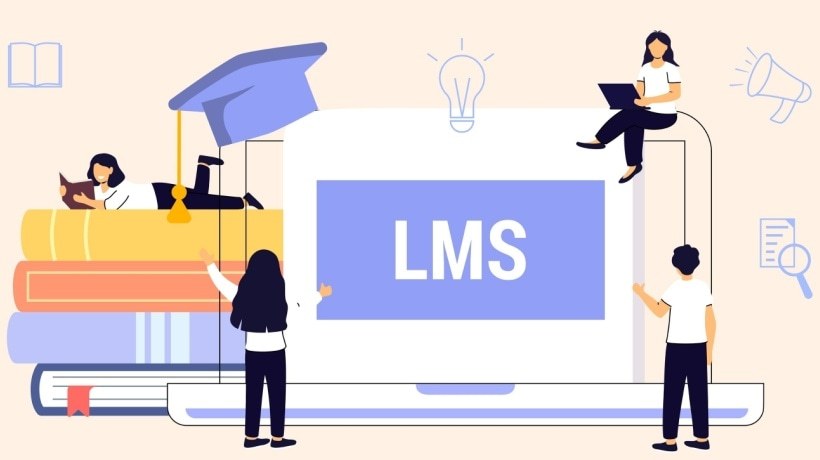Learning Management System Success: Building Your Team
I’m fortunate enough to work for a very collaborative organization and an amazing Learning Management System vendor who both had a huge part in building the right team. For Learning Management System success, one of the first things you may need to learn (I know I did…) was that you cannot do this all by yourself. Start sharing information as soon as you can to help make your life easier.
1. Determine Project Roles
If you’re working with the right Learning Management System vendor, they should have a big part (or lead) the initial conversation around project roles and responsibilities. You will be working with folks from the LMS vendor side and possibly consultants and getting this set up right from the start will help accelerate tasks as the project ramps up.
The project will most likely start with a welcome or initiation meeting with the LMS vendor to learn the implementation process and if you’ve scoped in consultants, introduce how they will work with you. I had the opportunity to have a few consultants work on the project and highly recommend bringing in consultants at least at the beginning and after the Learning Management System is live. This lets you leverage their expertise with the system to help you talk through configuration decisions in the beginning when sure, you’ve learned the system after taking all of the training, but you haven’t seen it in action with organizations - they have.
Whether you’re working with consultants or not, defining roles and responsibilities is critical to a successful Learning Management System implementation. First, remember you cannot do this alone and identify what roles are needed for the implementation project. The types of roles needed will vary by organization due to business reason, company size, project team members, or employing a consulting firm but should at minimum include:
Learning Management System Administrator
This is you (or you just love reading about Learning Management Systems...) and your role will be different depending on your specific project and organization. However, the LMS administrator will more than likely be the lead configuration decision-maker and keeper of all configuration documentation.
Learning And Development Lead
The Learning and Development lead works hand-in-hand with the LMS administrator to assist in making LMS configuration decisions that go beyond the system. In my experience, the learning management administrator will often bring a few LMS configuration options to the Learning and Development lead who will sometimes work collaboratively with the LMS administrator or just make a decision.
Project Manager (And/Or Enterprise Agile Coach)
The project manager on your team is the primary contact for the LMS vendor and is the keeper of the overall project timeline, helping keep your team, the LMS vendor and/or consultants accountable for deliverables.
Technical Lead
The technical lead is the conduit between your organization’s IT department and the LMS vendor and/or consultants. This role works closely with the LMS administrator to set up things like HRIS integrations, content migrations, single sign-on, etc.
Communications And Change Management Lead
This role works closely with the project manager to be the keeper of the overall stakeholders communications timeline. The learning management administrator may also work closely with this role to identify key points of change, especially if transitioning from one system to another.
Executive Sponsor
This is the role that will go to bat for you, plain and simple. I do not believe my Learning Management System implementation project would have been successful without this role. They also help make sure the project avoids scope creep and stays focused on the guiding principles (next article!)
2. Define Role Responsibilities
The next step after a kick-off meeting where the needed project roles are identified is to set define the role responsibilities. Defining role responsibilities early in the project will make sure it stays on time and everyone’s expectations are being met. It’s also important to keep in mind that the project role responsibilities and expectations need to agile and are not set in stone.
First, identify your strengths. What gets you energized? What drains your energy? Make sure your role includes what keeps you energized and let go (when you can!) of the energy draining tasks. Once you find your strength, help define the other role responsibilities based on your areas of opportunities.
It can be hard to be vulnerable here since you’re often the only one (besides the executive sponsor) who can make the final call on an LMS configuration decision and you want to make sure the team trusts you. Trust doesn’t think in black and white, though. This is something I personally wish I would have done at the start of the project. It would have saved me some valuable time (and even a few tears).
Here’s an Learning Management System project roles and responsibilities template if you’re looking for a starting place, but you’ll need to adjust to your project needs.If you’re looking for some “how to be vulnerable” inspiration, I highly recommend Brené Brown. This excerpt from Rising Strong: The Physics of Vulnerability is a good starting place.
Vulnerability is not winning or losing; it’s having the courage to show up and be seen when we have no control over the outcome. Vulnerability is not weakness; it’s our greatest measure of courage. - Brené Brown
See my last two shared insights below and stay tuned for future articles from the 10 insights I learned during my first rapid Learning Management System implementation for Learning Management System success!
- Prepare Before The Official Project Kick-Off.
- Understanding Your Organization’s Goals.
- Set Guiding Principles (And Stick To Them!) For Implementation.
- Get A Kanban Board And Go Agile.
- Schedule Regular Stakeholder Meetings and Communication.
- Establish Governance and Expectations Early.
- Never Assume Anything, Ever.
- Understand Authoring Tools (Native And Cloud-Based).
- Be Your Learner’s Advocate.








